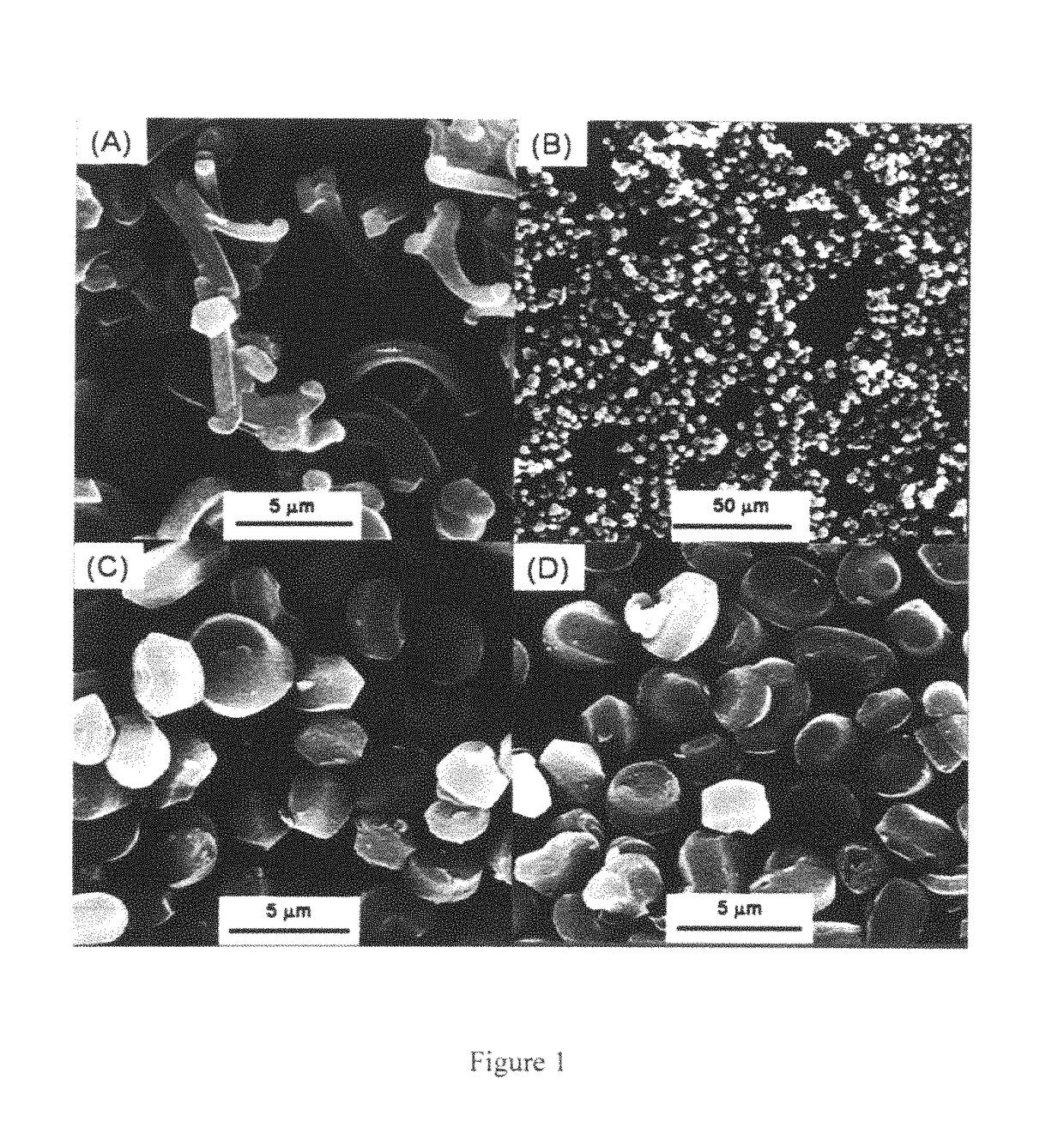Use of self-assembled nanoporous glass colloids for prolongation of plasticity of polymeric materials
a polymer material and nanoporous glass technology, applied in the direction of silica-polymorphs, molecular-sieve silica-polymorphs, silicon oxides, etc., can solve the problems of limited life of plasticizers and inability to protect them from degradation
- Summary
- Abstract
- Description
- Claims
- Application Information
AI Technical Summary
Benefits of technology
Problems solved by technology
Method used
Image
Examples
example 2
of Spheres, Discoids, Fibers
[0057]In this Example 2, mesoporous silica particles are synthesized by using disodium trioxosilicate (Na2SiO3.9H20, Fishcer Scientific) as the silica source, cetyltrimethylammonium chloride (CTAC, 25% aqueous, Aldrich) as an example of the structure directed agent (SDA) in the presence or absence of formamide (Aldrich) and hydrochloric acid (J T Baker) as a catalyst.
[0058]Mesoporous silica spheres can be synthesized in the absence of HCl from sols of molar compositions 1Na2SiO3.9H20:5-32 HCHO:0.5-0.8 CTAC:210 H2O; spheres exemplified here are prepared from the sol of molar composition 1Na2SiO3.9H20:22 HCHO:0.5 CTAC:210 H2O.
[0059]For the synthesis of discoids, the molar composition of the sol is maintained at 1Na2SiO3.9H20:0.5-0.8 CTAC:210 H2O:16 HCl; whereas, origami shapes are synthesized from the sol of molar composition 1Na2SiO3.9H20:5-32 HCHO:0.5-0.8 CTAC:210 H2O:16 HCl.
[0060]A calculated amount of Na2SiO3.9H20 is dissolved in distilled water under s...
PUM
| Property | Measurement | Unit |
|---|---|---|
| temperature | aaaaa | aaaaa |
| temperature | aaaaa | aaaaa |
| pore diameter | aaaaa | aaaaa |
Abstract
Description
Claims
Application Information
 Login to View More
Login to View More - R&D
- Intellectual Property
- Life Sciences
- Materials
- Tech Scout
- Unparalleled Data Quality
- Higher Quality Content
- 60% Fewer Hallucinations
Browse by: Latest US Patents, China's latest patents, Technical Efficacy Thesaurus, Application Domain, Technology Topic, Popular Technical Reports.
© 2025 PatSnap. All rights reserved.Legal|Privacy policy|Modern Slavery Act Transparency Statement|Sitemap|About US| Contact US: help@patsnap.com



